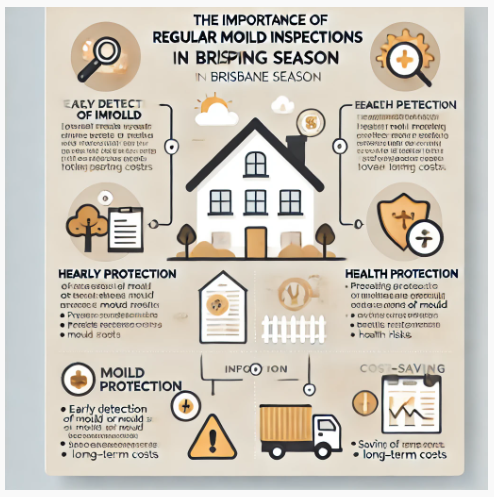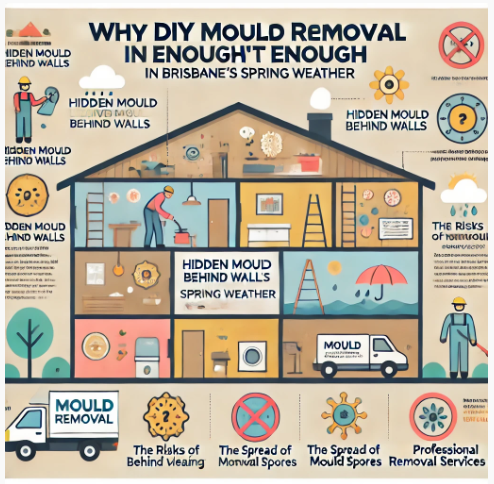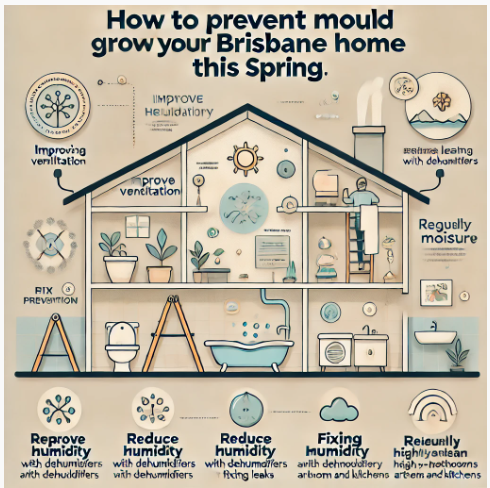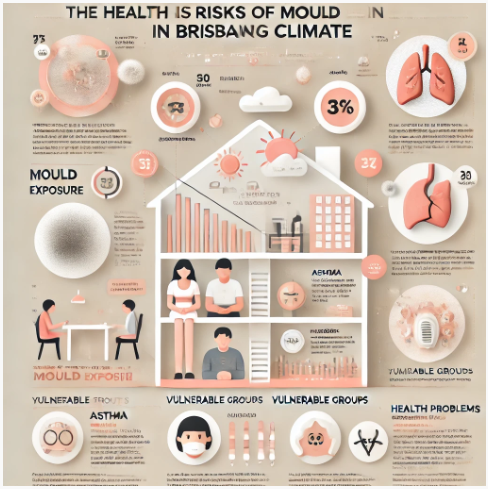Brisbane’s climate is renowned for its high humidity levels, a characteristic that significantly impacts mould growth within homes. In this blog, we will explore the relationship between Brisbane’s humidity and mould problems, delving into the science behind it and providing actionable tips for managing indoor humidity effectively.
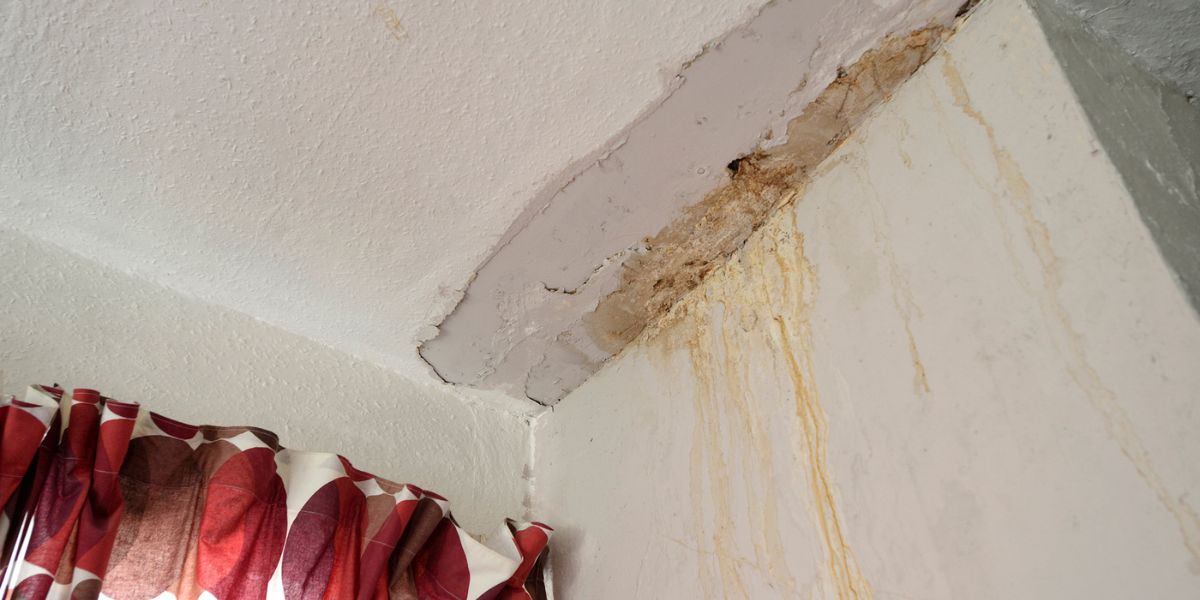
Understanding the Role of Humidity in Mould Growth
To comprehend the connection between humidity and mould growth in Brisbane, it’s crucial to understand the science behind it. Mould, a type of fungi, thrives in damp environments. When humidity levels rise, the air becomes saturated with moisture, providing mould spores with the ideal conditions for activation and growth.
Mould spores are omnipresent, floating in the air both indoors and outdoors. They remain dormant until they encounter the right conditions. High humidity, particularly in the subtropical climate of Brisbane, provides this trigger.
What Are Mould Spores, and How Do They Grow?
Mould spores are tiny, microscopic particles in the air around us. They are like the seeds of the mould, waiting for the right conditions to sprout and grow. When these spores find a suitable environment with high humidity, they germinate. The spores release enzymes that break down organic matter, such as wood, paper, or drywall, providing the nutrients necessary for mould growth.
Statistics on Brisbane’s Humidity Levels
High humidity levels characterise Brisbane’s climate throughout the year. The city experiences a humid subtropical climate, with warm to hot and humid summers and mild, dry winters. The relative humidity in Brisbane often exceeds 70%, making it a prime location for mould issues.
How Does Brisbane’s Climate Compare to Other Australian Cities?
Brisbane’s climate stands out when compared to other Australian cities. While southern cities like Melbourne and Sydney have more temperate climates, Brisbane’s subtropical climate is defined by high temperatures and humidity. The subtropical climate’s long, hot, and humid summers encourage mould spores to activate and multiply.
During the summer, humidity levels can soar well above 70%, creating a conducive environment for mould to thrive. The combination of high humidity and frequent rainfall adds to the challenge of mould prevention in Brisbane.
How Do High Temperatures and Humidity Contribute to Mould Growth?
High temperatures alone are not enough to trigger mould growth. However, when combined with high humidity, they create the ideal conditions for mould to thrive. The heat accelerates the metabolic processes of mould, while the high humidity provides the necessary moisture for spore activation and mould growth.
The Unique Challenges of Brisbane’s Subtropical Climate
Brisbane’s climate sets it apart from many other Australian cities. While the southern cities experience a more temperate climate, Brisbane’s subtropical climate is marked by high temperatures and humidity. This unique climate provides the perfect conditions for mould to take hold and grow.
What Are the Specific Characteristics of Brisbane’s Subtropical Climate?
Brisbane’s subtropical climate is characterised by several key features, including:
- Long, hot, and humid summers
- Mild, dry winters
- High humidity levels throughout the year
- Frequent rainfall, especially during the summer months
How Does the Subtropical Climate Impact Daily Life in Brisbane?
The subtropical climate influences various aspects of life in Brisbane, from the way people dress to the types of plants that thrive in the region. It also affects the design and maintenance of homes, particularly when managing indoor humidity.
Mould can colonise various surfaces, including walls, ceilings, and hidden areas like wall cavities, attics, and crawl spaces. It can hide in plain sight, often without homeowners realising the extent of the infestation until it becomes a visible problem.
How Does Mould Spread and Colonize Different Areas of a Home?
Mould can spread and colonise various areas in a home. Here’s how it happens:
Airborne Spores: Mould spores are carried by the air, both indoors and outdoors. They can settle on surfaces and, if conditions are right, start to grow.
Hidden Areas: Mould can grow in concealed spaces like wall cavities, attics, and crawl spaces. These areas often lack proper ventilation and can become breeding grounds for mould.
Surface Growth: Mould can colonise visible surfaces like walls and ceilings, particularly in areas with high humidity and moisture.
Spreading Through Aircon Systems: If mould is present in your home, it can be spread through the air conditioning (Aircon) system. The system can circulate mould spores throughout your home, contributing to the problem.
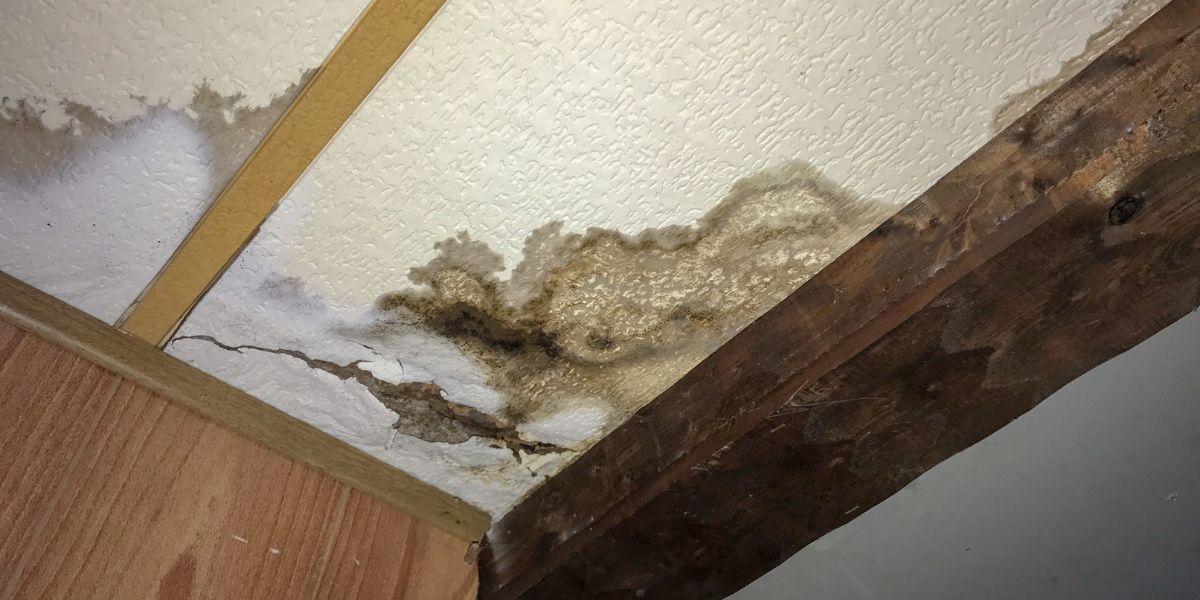
Indoor Humidity Control in Brisbane
Given the challenges posed by Brisbane’s climate, it’s essential to have strategies for managing indoor humidity effectively. High-risk areas in homes, such as bathrooms and kitchens, require special attention:
How Can You Manage Indoor Humidity Levels in Brisbane?
Effective humidity management is key to mould prevention in Brisbane. Here are some strategies:
Use Exhaust Fans: Ensure that bathrooms and kitchens are equipped with exhaust fans that vent outside. These fans can help remove excess moisture from the air while showering or cooking.
Open Windows and Doors: When the weather permits, open windows and doors to encourage cross-ventilation, which can help reduce indoor humidity levels.
Keep Indoor Temperatures Comfortable: Maintaining a comfortable indoor temperature can help prevent condensation and reduce humidity. Using air conditioning (Aircon) can be effective, but it’s important to ensure that your system is properly maintained to avoid mould growth within it.
Check for Leaks: Inspect plumbing fixtures and pipes for leaks regularly. Leaks can introduce excess moisture into your home, contributing to mould problems. Address any leaks promptly.
Use Dehumidifiers: Dehumidifiers can be particularly beneficial in Brisbane’s humid climate. These devices remove excess moisture from the air, helping to maintain appropriate indoor humidity levels.
Consider Mould-Resistant Products: In high-humidity areas, consider using mould-resistant paint, drywall, and other building materials to reduce the likelihood of mould growth.
Preventing Mould Growth through Humidity Management
Humidity management is a proactive strategy for mould prevention. By maintaining optimal indoor humidity levels and addressing potential moisture sources, you can significantly reduce the risk of mould growth in your Brisbane home. However, it’s important to remember that humidity control should be an ongoing effort. Consistent vigilance and routine maintenance are key to keeping your home mould-free in Brisbane’s climate.
Why Is Consistency Important in Mould Prevention?
Mould prevention is not a one-time task; it’s an ongoing process. Consistency is crucial because:
- Brisbane’s climate remains humid year-round, so maintaining optimal humidity levels is a continuous effort.
- Mould spores are always present, so vigilance is essential to prevent their activation.
- Routine maintenance, such as checking for leaks and ensuring your Aircon system is clean, is necessary to address potential mould sources.
Mould prevention not only ensures a healthier living environment but also safeguards your property from potential structural damage and helps maintain its value. It’s essential to address the challenges presented by Brisbane’s climate with a proactive approach to indoor humidity control.
What Are the Consequences of Ignoring Mould Prevention?
Ignoring mould prevention can have significant consequences, including:
- Health issues for occupants, such as allergies, respiratory problems, and skin irritation.
- Structural damage to your home, which can be costly to repair.
- Decreased property value, making it more challenging to sell your home.
- The need for costly mould remediation if an infestation becomes severe.
The high humidity levels in Brisbane significantly contribute to mould growth. Understanding the relationship between humidity and mould is the first step in mould prevention. By implementing effective strategies to manage indoor humidity, you can create a mould-resistant environment, ensuring the comfort and safety of your Brisbane home. Consistency in humidity control is key to keeping mould at bay and preserving the well-being of your home and its occupants.
